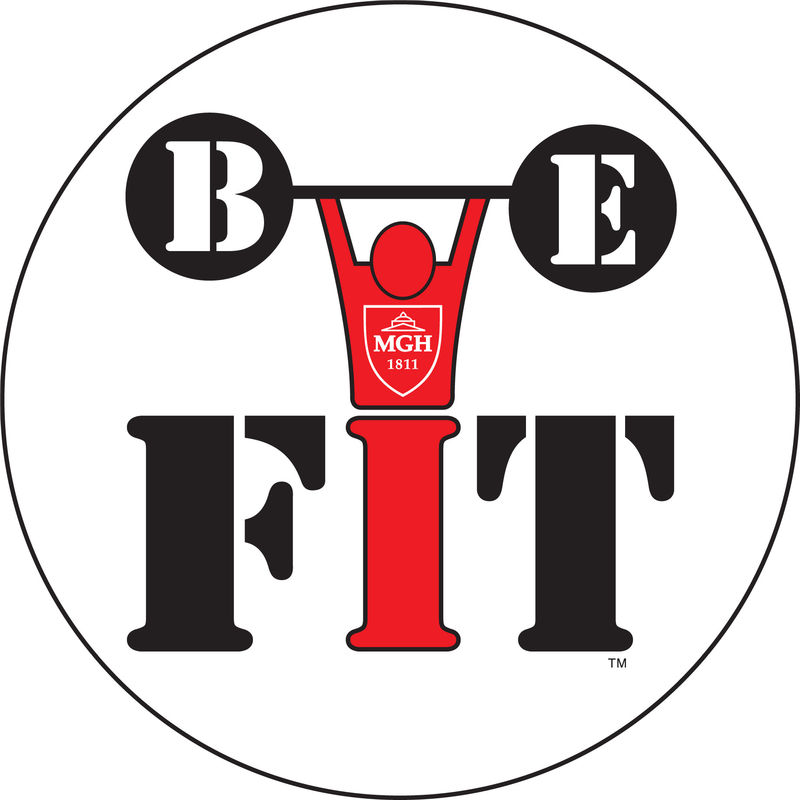|
If you have decided to ramp up your exercise, congratulations! Now comes the next big question: what to eat to optimally support workouts? And does meal timing and quantity matter?
The short answer: it depends. If your goal is to build muscle or to increase your workouts in length or intensity, you may benefit from taking a closer look at your diet. What to eat? The ideal post-exercise meal should contain both carbohydrates (bread, rice, pasta, potatoes, fruits, etc.) and proteins (meats, fish, eggs, dairy, nuts, beans, etc.). This is important because protein helps to repair and build muscle, which maximizes your efforts from exercise. Carbohydrates are necessary to replenish energy stores and prevent your body from breaking down muscle for energy. How much to eat?
Research suggests aiming for 1 to 1.5 grams per kilogram of bodyweight. For example, if you weigh 165 pounds (75kg) then 75 grams of carbohydrate at your meal would be appropriate. This might look like: ¼ cup granola + 1 cup vanilla yogurt + banana OR 1½ cup cooked pasta with ½ cup tomato sauce
Research suggests aiming for roughly 25 grams at meals. This might look like: Cup of Greek yogurt + small handful of nuts OR A small chicken breast (about the size of a deck of cards) When to eat? This largely depends on when you last ate. If you ate 1 to 2 hours before your workout, then the post-exercise meal can be delayed up to 4 hours. However, if you ate 4 to 6 hours prior, then you should eat soon after (within 2 hours). REFERENCES: Aragon AA, Schoenfeld BJ. Nutrient timing revisited: Is there a post-exercise anabolic window? Journal of the International Society of Sports Nutrition. 2013;10(1). Poole C, Wilborn C, Taylor L, Kerksick C. The role of post-exercise nutrient administration on muscle protein synthesis and glycogen synthesis. J Sports Sci Med. 2010;9(3):354-363. Smith JEW, Holmes ME, McAllister MJ. Nutritional considerations for performance in young athletes. Journal of Sports Medicine. 2015;2015:1-13. By Qian Liu, MGH Dietetic Intern
0 Comments
This time of year, it seems everywhere you turn—the internet, social media, television, magazines, friends and family—someone is giving out nutrition advice. With so much information from so many different sources, it can feel overwhelming trying to identify what is fact and what is fiction.
Credible nutrition advice should be backed by scientific evidence. There are red flags that can help you spot potential misinformation that is not evidence based. Next time you are questioning nutrition advice, stop and ask: Does this sound like click bait? Sensationalized headlines, quick-fix solutions, and anything that sounds too good to be true, likely is. Does this sound oversimplified? Nutrition isn’t black and white. No one food is a “cure” for all ailments and no food or ingredient is “poison.” If someone is putting forth claims that lack nuance, that’s a red flag. Who is providing this advice? Is it coming from a reputable website? Has the person been educated on nutrition? Look for websites with .edu, .gov, or .org addresses and experts with credentials, like a registered dietitian (RD or RDN). Ideally, they should also list references used to support their claims. REFERENCES Bellows L, Moore R. Nutrition Misinformation: How to Identify Fraud and Misleading Claims. Colorado State University Extension. Accessed January 3, 2023. Goldberg JP, Sliwa SA. Communicating Actionable Nutrition Messages: Challenges and Opportunities. Proc Nutr Soc. 2011;70(1):26-37. By Melissa Ferris, MS, MGH Dietetic Intern The holiday season is upon us and with it brings celebration, social gatherings, and - of course - food, glorious food. Mindful eating is an approach that focuses on being fully present in the moment, helping you to better judge fullness, decrease mindless eating, and make more intentional food choices. Here are a few tips to help you navigate mindful eating through the season. Eat Sitting Down When Possible It can be so easy to munch on snacks and appetizers without thinking while talking to friends and family. The act of sitting down reminds your brain that you are eating and allows you to be more in tune with hunger and fullness cues. Wait Before Getting More After finishing your first plate, give yourself a few minutes to check in with your fullness. Are you satiated? Would more food make you feel uncomfortably full? Savor Each Bite What do you notice about the food you are eating? Is it sweet, salty, crunchy? How does it smell? Aim to focus on the taste and texture of each mouthful. REFERENCES: Harris C. Mindful eating: studies show this concept can help clients lose weight and better manage chronic disease. Today’s Dietitian. 2013;15:42. Laitinen J, Ek E, Sovio U. Stress-related eating and drinking behavior and body mass index and predictors of this behavior. Prev Med. 2002;34:29-39. Mathieu J. What should you know about mindful and intuitive eating? J Am Diet Assoc. 2009;109:1982-1985. Nelson JB. Mindful eating: the art of presence while you eat. Diabetes Spectr. 2017;30(3):171-174. By Phoebe Zhou, MGH Dietetic Intern Fall is the perfect time to enjoy apples, though their health benefits can be experienced throughout the year. Apples are source of fiber and contain protective plant compounds like quercetin and pectin.
Quercetin may help control blood sugar and eating foods containing this compound has been associated with decreased diabetes risk. It may also offer protection for your heart. Pectin may help to lower cholesterol though more research is needed. Try adding more apples into your cooking this fall:
Not a fan of apples? Quercetin can also be found in:
REFERENCES: Boyer J and RH Liu. Apple phytochemicals and their health benefits. Nutrition Journal. 2004; 3:5. Brouns F, et al. Cholesterol lowering properties of different pectin types in mildly hypercholesterolemic men and women. European Journal of Clinical Nutrition. 2012; 66: 591-599. Dabeek, WM and MV Marra. Dietary quercetin and kaempferol: bioavailability and potential cardiovascular-related bioactivity in humans. Nutrients. 2019; 11(10):2288. Dhanya R. Quercetin for managing type 2 diabetes and its complications, an insight into multitarget therapy. Biomedicine & Pharmacotherapy. 2022;146:112560. Gerhauser C. Cancer chemopreventive potential of apples, apple juice, and apple components. Planta Medica. 2008;74(13):1608-1624. Koutsos A, Tuohy KM, Lovegrove JA. Apples and cardiovascular health--is the gut microbiota a core consideration?. Nutrients. 2015;7(6):3959-3998. Wojdyło A, Oszmiański J, Laskowski P. Polyphenolic compounds and antioxidant activity of new and old apple varieties. Journal of Agricultural and Food Chemistry. 2008;56(15):6520-6530. Yao Z, Gu Y, Zhang Q, et al. Estimated daily quercetin intake and association with the prevalence of type 2 diabetes mellitus in Chinese adults. European Journal of Nutrition. 2019;58(2):819-830. Yi H, Peng H, Wu X, et al. The therapeutic effects and mechanisms of quercetin on metabolic diseases: Pharmacological Data and clinical evidence. Oxidative Medicine and Cellular Longevity. 2021; 6678662. By Ummu D Erliana, PhD, CLC, MGH Dietetic Intern Meal planning is a useful tool to have in your healthy lifestyle toolbox. It consists of writing down meal options to assist in grocery shopping and weekly food preparation.
Meal planning can help increase the consumption of fruits and vegetables in our diets and reduce intake of added sugar, saturated fat, and sodium. How to Start Meal Planning: Choose a guide to help organize your meals
Check your fridge, freezer, and pantry for items to incorporate in your weekly plan
Get inspired and make a menu
Feeling overwhelmed? Start by selecting a protein (like peanut butter, eggs, beans, or chicken); grain (like oatmeal, whole wheat tortilla, or quinoa); and fruit or vegetable. Time to grocery shop
REFERENCES: Gordon, Barbara. 3 Strategies for Successful Meal Planning. Academy of Nutrition and Dietetics. Reviewed August 2022. Accessed October 3, 2022. U.S. Department of Agricultural and U.S. Department of Health and Human Services. Dietary Guidelines for Americans, 2020-2025. 9th Edition. December 2020. Accessed October 2022. By Taylor Klein, MGH Dietetic Intern If you’re a parent, picky eating can make mealtime a struggle. Read on to learn how to take some pressure off you (as the provider) and your child (as the eater). The secret? Remembering those distinct roles.
As a parent, aim to decide what, when, and where food is served. Children decide whether and how much to eat. The benefits to this include:
Allowing your child to choose how much of each food to eat creates a safe environment for them to try new things. Evidence shows that exposure of any kind to a new food (seeing, touching, smelling) can increase the likelihood that children of all ages will try it, even if it takes up to 20 exposures! The key is to stay consistent with pressure-free feeding. It’s as simple as reassuring wary eaters with “you don’t have to eat it” alongside micro portions (think: one bite size) to limit food waste. If they don’t eat the new food, count it as an exposure. If they do eat the new food, you can always offer more. Try to include at least one food at meals that everyone likes. The best part about all of this? Mealtime can become a space to connect, instead of a battleground. REFERENCES: Carruth BR, Ziegler PJ, Gordon A, Barr SI. Prevalence of picky eaters among infants and toddlers and their caregivers' decisions about offering a new food. J Am Diet Assoc. 2004;104(1 Suppl 1):s57-64. Dazeley P, Houston-Price C. Exposure to foods' non-taste sensory properties. A nursery intervention to increase children's willingness to try fruit and vegetables. Appetite. 2015; 84:1-6. Raise a Healthy Child Who Is a Joy to Feed. Ellyn Satter Institute. Accessed August 2022. By Grace Cesarini, MA, CHES, MGH Dietetic Intern The American food supply is considered quite safe, but it’s not without flaws: about 1 in 6 Americans is impacted by foodborne illness or “food poisoning” every year, which can include gastrointestinal upset, dehydration, and, in rare cases, lead to hospitalization or death.
Many foodborne illnesses are caused by bacteria, most commonly Salmonella and Campylobacter. These bacteria grow rapidly in a temperature range known as the “Danger Zone” (40 to 140℉). Though food poisoning is often associated with meat, illness-producing microbes such as Bacillus cereus can also grow in improperly stored starches such as rice, beans, and pasta. Read on to learn how to protect yourself. To Keep Food Out of the Danger Zone:
To Safely Eat Leftovers:
REFERENCES: McDowell RH, Sands EM, Friedman H. Bacillus Cereus. StatPearls Publishing. Sept 16, 2021. Office of Disease Prevention and Health Promotion. Healthy People 2020. Accessed July 7 2022. Tack DM, Ray L, Griffin PM, et al. Preliminary Incidence and Trends of Infections with Pathogens Transmitted Commonly Through Food — Foodborne Diseases Active Surveillance Network, 10 U.S. Sites, 2016–2019. CDC Morbidity and Mortality Weekly Report. 2020;69(17):6. USDA Food Safety and Inspection Service. Keep Food Safe! Food Safety Basics | Food Safety and Inspection Service. Updated December 20, 2016. Accessed July 2022. USDA Food Safety and Inspection Service. Leftovers and Food Safety. Updated July 31, 2020. Accessed July 2022. U.S. Food and Drug Administration. Safe Minimal Internal Temperatures. Published August 2017. Accessed July 2022. U.S. Food & Drug Administration. What You Need to Know about Foodborne Illnesses. February 17, 2022. Accessed July 2022. By Avery Lorio, MGH Dietetic Intern It’s no secret that some of the most delicious fruits and vegetables are currently being harvested across the country. In Massachusetts, beets are in season from June through September. Though often underappreciated, they are a nutritious and colorful addition to this summer’s bounty.
Research suggests this antioxidant and nutrient-rich vegetable has compounds that may reduce inflammation associated with chronic disease. (Beets may play a role in decreasing the risk of cancer and heart disease.) They also contain protective pigments called betalains that give them their deep red and yellow color. The Leaves are Edible Too Beetroot leaves contain a variety of nutrients and can easily be chopped up and added to a fresh summer salad or sautéed, like spinach. New to beets? Try this lemon beet hummus. To find locally grown beets (and other produce) this summer, here are a few Boston-area markets:
Thursdays from 1:30 PM - 6:30 PM June 2 - November 17, 2022
Tuesdays and Fridays from 11AM - 6 PM May 13 - November 22, 2022
Wednesday 12 - 6 PM May 18 - November 23, 2022 Check here for other farmers' markets throughout Massachusetts. REFERENCES: Brookline Farmers Market. Brookline Farmers Market. Accessed June 2022. Ceclu, L and N Oana-Viorela. Red Beetroot: Composition and Health Effects - A Review. Journal of Nutritional Medicine and Diet Care. 2020;5(2). Clifford T, Howatson G, West D, and E Stevenson. The Potential Benefits of Red Beetroot Supplementation in Health and Disease. Nutrients. 2015;7(4): 2801-2822. Laucharoen, S. A Guide to Farmers’ Markets Around Boston. Boston.com. Accessed June 2022. Massachusetts Grown Produce Availability Chart. Massachusetts Department of Agriculture Resources. Accessed June 2022. By Sabrina Grovom, MGH Dietetic Intern The USDA Dietary Guidelines for Americans recommend adults consume about 30 grams of total fiber daily – at least 5 to 10 grams of that should come from soluble fiber sources. Soluble fiber can help to reduce the risk of heart disease and diabetes.
Soluble fiber lowers LDL cholesterol by forming a gel during digestion, which helps to trap and remove cholesterol from the body lowering blood levels. High levels of LDL cholesterol can accumulate along your vessel walls, this is called plaque and makes it harder for your body to pump blood to your organs. Soluble fiber also causes food to move more slowly through the digestive tract. This supports a gradual release of sugar into our blood and helps to reduce blood sugar spikes. Include More Soluble Fiber in your Diet:
Everyday foods can help you meet recommendations - the above example provides 8 grams soluble fiber. REFERENCES Abutair AS, Naser IA, Hamed AT. Soluble fibers from psyllium improve glycemic response and body weight among diabetes type 2 patients (randomized control trial). Nutrition Journal. 2016;15(1): 86. Li, BW, Andrews KW, Pehrsson PR. Individual sugars, soluble, and insoluble dietary fiber contents of 70 high consumption foods. Journal of Food Composition and Analysis. 2002;15: 715-723. Tosh SM, Bordenave N. Emerging science on benefits of whole grain oat and barley and their soluble dietary fibers for heart health, glycemic response, and gut microbiota. Nutrition Reviews. 2020;78(1): 13-20. U.S. Department of Agriculture and U.S. Department of Health and Human Services. Nutritional goals for age-sex groups. Dietary Guidelines for Americans, 2020-2025. 2020; 9:101. US Department of Health and Human Services. Your Guide to Lowering Your Cholesterol With Therapeutic Lifestyle Changes. National Institutes of Health. 2005; 27. By Sophie Walton, MS, MGH Dietetic Intern There is pretty much an app for everything now. With booming research relating diet to health outcomes, nutrition-focused apps promise users a more detailed sense of their health through self-monitoring.
We know that nutrition is not one-size-fits-all. Diet recommendations should always be individualized. It’s important to understand that nutrition apps work similarly. What might be a great tool for one person may not be helpful to another. The good news is there are a variety of options available. Some guide users in tracking macro– and micronutrients while others prompt users to track emotions related to food choices instead of calories. There are even apps specific to conditions such as eating disorders, diabetes, or pregnancy. For data-driven, nutrient-focused folks: try Cronometer For those seeking understanding around emotional eating patterns: try Am I Hungry? For visual learners, curious about mindful eating without calorie emphasis: try Ate Food Journal For those interested in support for disordered eating: try Rise Up and Recover (recommended as an adjunct to professional treatment) Research indicates that while most nutrition apps can provide the user with data, they may lack the education and individualized considerations needed to promote true understanding and long-term improvement. If you’re interested in trying an app, it’s helpful to work with a dietitian (RD). The combination of an RD’s education and the app’s consistency is likely to be more beneficial than using an app alone. Interested in meeting with an RD? Call the MGH outpatient nutrition department at 617-726-2779 to learn more. REFERENCES: Brown J, Franco-Arellano B, Froome H, Siddiqi A, Mahmood A, Arcand J. The Content, Quality, and Behavior Change Techniques in Nutrition-Themed Mobile Apps for Children in Canada: App Review and Evaluation Study. JMIR Mhealth Uhealth. 2022;10(2):e31537. Choi J, Chung C, Woo H. Diet-Related Mobile Apps to Promote Healthy Eating and Proper Nutrition: A Content Analysis and Quality Assessment. Int J Environ Res Public Health. 2021;18(7):3496. König L, Attig C, Franke T, Renner B. Barriers to and Facilitators for Using Nutrition Apps: Systematic Review and Conceptual Framework. JMIR Mhealth Uhealth. 2021;9(6):e20037. U.S. Department of Agriculture. American Adults are Choosing Healthier Foods, Consuming Healthier Diets. Published 2014. Accessed April 24, 2022. van Dijk M, Koster M, Oostingh E, Willemsen S, Steegers E, Steegers-Theunissen R. A Mobile App Lifestyle Intervention to Improve Healthy Nutrition in Women Before and During Early Pregnancy: Single-Center Randomized Controlled Trial. J Med Internet Res. 2020;22(5):e15773. Więckowska-Rusek K, Danel J, Deja G. The Usefulness of the Nutrition Apps in Self-control of Diabetes Mellitus – The Review of Literature and Own Experience. Pediatric Endocrinology Diabetes and Metabolism. 2022;28(1):75-80. By Tara Greenwood, MGH Dietetic Intern |
TOPICS
All
Archives
December 2023
|











 RSS Feed
RSS Feed